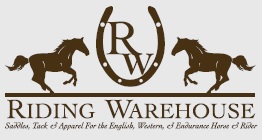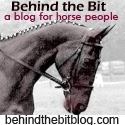 How often to you watch an dressage video and think "this is just what I needed"? In my case the answer is "not very." In fact usually I'm disappointed. Last year I rented Kyra Kirkland Rider’s Seat and Balance vol 2 video. I'm not an advanced rider, but this volume, at least, was disappointingly basic. In one segment, riders were shown leaning exaggeratedly off to one side while a straight vertical line was superimposed over the cantle--as if you need a point of reference to see that the rider is leaning at a 45 degree angle. Discussions of seat and balance lacked the subtlety I'd hoped for. I'm sure Kyra could amaze us with insights on riding--it just didn't come across in this video.
How often to you watch an dressage video and think "this is just what I needed"? In my case the answer is "not very." In fact usually I'm disappointed. Last year I rented Kyra Kirkland Rider’s Seat and Balance vol 2 video. I'm not an advanced rider, but this volume, at least, was disappointingly basic. In one segment, riders were shown leaning exaggeratedly off to one side while a straight vertical line was superimposed over the cantle--as if you need a point of reference to see that the rider is leaning at a 45 degree angle. Discussions of seat and balance lacked the subtlety I'd hoped for. I'm sure Kyra could amaze us with insights on riding--it just didn't come across in this video.
The USDF video -- thumbs up!
I hesitated to buy the USDF Showing Your Sport Horse In-Hand video. I had already purchased the Hanoverian Society video on the same subject. It was pretty good, so I must have ordered the USDF video during a moment of self-indulgence. For the modest price of $25, this video far exceeded my hopes for learning how to show in-hand. I feel anyone who handles young horses should see it. I'm delighted to recommend the USDF Showing Your Sport Horse In-Hand video.
So here is a summary what it covers and some useful few tidbits I gleaned from this resource. The rationale for learning in-hand techniques
The rationale for learning in-hand techniques
You might wonder why you'd buy such a video if you don't plan on showing. The narrator makes an excellent case for teaching young horses this basic groundwork whether they'll be shown in-hand or not. In all horse handling, the narrator asserts, we form a relationship with our horse. Our relationship can be poor (the horse thinks we're inconsequential or a predator) or good (the horse sees us as a dominant member of the herd). If we establish ourselves as a leader we can influence the horse. By encouraging the horse to "experiment calmly" when we present them with a learning situation, we cultivate a good working relationship that is the basis for future training, whether it's driving, riding, whatever.
Equipment
Have you ever wondered about the different ways to attach a lead shank to a halter ( or to a show bridle)? This video covers over and under the nose, attaching the chain to itself, and other options and the rationale for using each one. For in-hand work, expert handlers offer suggestions for the best way to grip reins or lead line. Basic groundwork
Basic groundwork
The viewer is treated to video footage depicting common handler errors -- very realistic in my opinion and the negative consequences (often safety-related issues) are made abundantly clear. For example, we see actual footage of a young horse that has put his foot through the reins during a class at Devon -- the experienced handler allowed the reins to dangle. Sure, we get the point, but we also see how calmly and assuredly the handler manages and resolves the problem. There are many great role models in this video.
An expert handler talks about how to hold the horse during the trotwork. He suggests that the reins/lead be held short, but loose so that the horse is not constrained. One safety measure is to lightly press the right hand (which is holding the reins) against the horse's neck, about 1/3 of the way down, so that if the horse bolts or veers in, the handler can a) feel the horse starting to react and b) use that hand to balance against the horse.
Preparation/control
In this section, topics covered include respect for space and control. Simple training techniques are presented for teaching the horse forward, displacement of haunch and shoulder, and backward movement as well as halt. In teaching any or all of these basics, it is best to ignore head-tossing and pawing. Focus on getting the desired response. I learned in this video that if you rub the horse with the butt of the whip as a reward, it helps him/her accept the whip better. The video stresses the value of teaching the horse to lower its head on command, and we see several compelling instances where nervous horses become calm and soft-eyed when they lower their head on cue. In-hand work
In-hand work
I'll toss out some useful bits of advice...
When standing a horse up in a conformation pose, try to correct by moving forward.
If you have to back the horse up, don't the reins or the halter; apply pressure to the horse's chest to get a better stance.
When halting the horse in preparation for the conformation stance, turn your body to the horse as you stop -- use body language wherever possible to emphasize what you want them to do.
Pace, gaits, collection, and carriage
Simply said, the video offers advice on...
- getting a good walk and trot
- correct high head/hollow
- dealing with fussing horses
- use of the restraining aids
- correcting explosions in trot work
- handler attire
About the triangle
The judge looks for certain things in the triangle work. The first and last legs of the triangle are to assess straightness/balance. The long side is to achieve brilliance in the trot work. Perhaps one of the most useful segments of the video is the critique of amateur handlers toward the end of the video.
Conclusion
While this video has been around for awhile, I've not heard much about it and feel it may be underutilized. This is a great video for those who spectate and/or compete in breed shows, but also anyone who works with young or poorly trained horses. Many of the things I learned from this video were applied at the breed show Riley and I competed in today. Oh, by the way, I hope to have my own video footage of that show up on the blog soon!









I agree with your assessment of Kyra Kyrklund's video-teaching ability. After buying her "Lateral Movements," I still haven't even finished watching it, because I couldn't get past more than 10 minutes of listening to her. Your in hand discussion gave me a flashback to my teens showing in 4-H showmanship, trotting myself to death while my horse WALKED. I would love to have had an explosive trot! lol
ReplyDeleteJust thought you might like a bit of background to the spotty horse in your photo! The filly is Linnet and I believe the photo was her winning at the Scottish Appaloosa Show. She is shown by Joan Sillitoe. I saw Joan this Sunday at the Northern Appaloosa show and she is just a pleasure to watch, all her horses behave and trot up beautifully. If I could run horses up as well as she does at my age (Joan will have thirty plus years on me I suspect!) I'd be happy. Her horses are also perfectly turned out. I think her grandson was showing in the young handlers and is going to be a chip of the old block.
ReplyDeleteHi Laura, I'll attribute this photo more thoroughly this weekend. What a gorgeous animal and an interesting story?
ReplyDelete